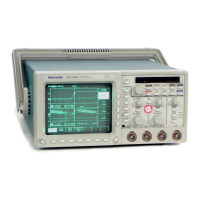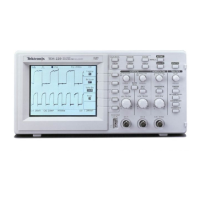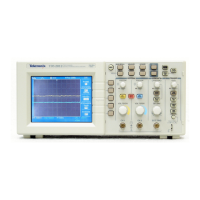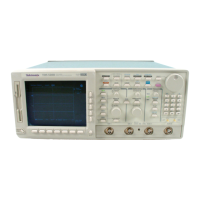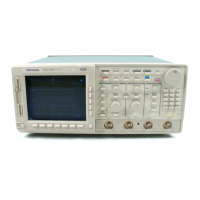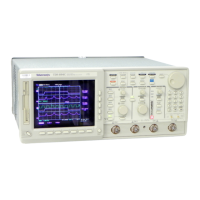Command Descriptions
TDS Family Oscilloscope Programmer Manual
2–229
selects AC trigger coupling.
selects DC trigger coupling.
coupling removes the high frequency components of the DC signal.
coupling removes the low frequency components of the AC signal.
selects DC low sensitivity. It requires added signal amplitude for more
stable, less false triggering.
sets the main edge trigger coupling to DC.
TRIGger:MAIn:EDGE:SLOpe
Selects a rising or falling slope for the main edge trigger. This is equivalent to
setting Slope in the Trigger menu.
Trigger
! " #
specifies to trigger on the falling or negative edge of a signal.
specifies to trigger on the rising or positive edge of a signal.
Arguments
Examples
Group
Syntax
Arguments

